Report: How and Why the Five Substitute Rule is a Game Changer for Football
To Download a PDF of this Report, Click here.
Report Foreword:
This report explores the impact of a recent substitution rule change made by English Premier League clubs. Teams have voted in favour of increasing the number of permissible substitutions. Now for the 2022/2023 season, teams will be able to make five substitutes instead of the traditional three during each match. The principal driver behind this decision is to mitigate the effects of increased match intensity and fixture congestion, factors which are believed to directly impact player health and welfare.
The impact of the increase in the number of substitutions on player health and well-being will emerge over time. For the immediate future, this report offers guidance on how contemporary technologies and data management strategies can best support practitioners in evaluating how to most effectively embrace this change.
For some time now, there have been calls to introduce changes that will better protect players from the demands of an increasingly attritional sport. Historically rule changes (e.g. compulsory shin guards and VAR) have been met with mixed responses, and thus adoption has been a relatively slow process. What this means for teams and practitioners is yet to be fully materialised.
This change by the Premier League will be closely observed by outsiders. This year’s World Cup in Qatar presents competing nations with high fixture density coupled with potentially challenging climatic conditions. As such, it will be interesting to see how the increased number of player substitutions is debated across the context of the biggest tournament in the World.
I hope the content of this report acts as a starting point for positive conversations within football clubs using the expertise of performance staff to most effectively protect players but also to protect the unique physical attributes of the game.
Yours sincerely,
Chris Barnes – UEFA Fitness Advisory Group member
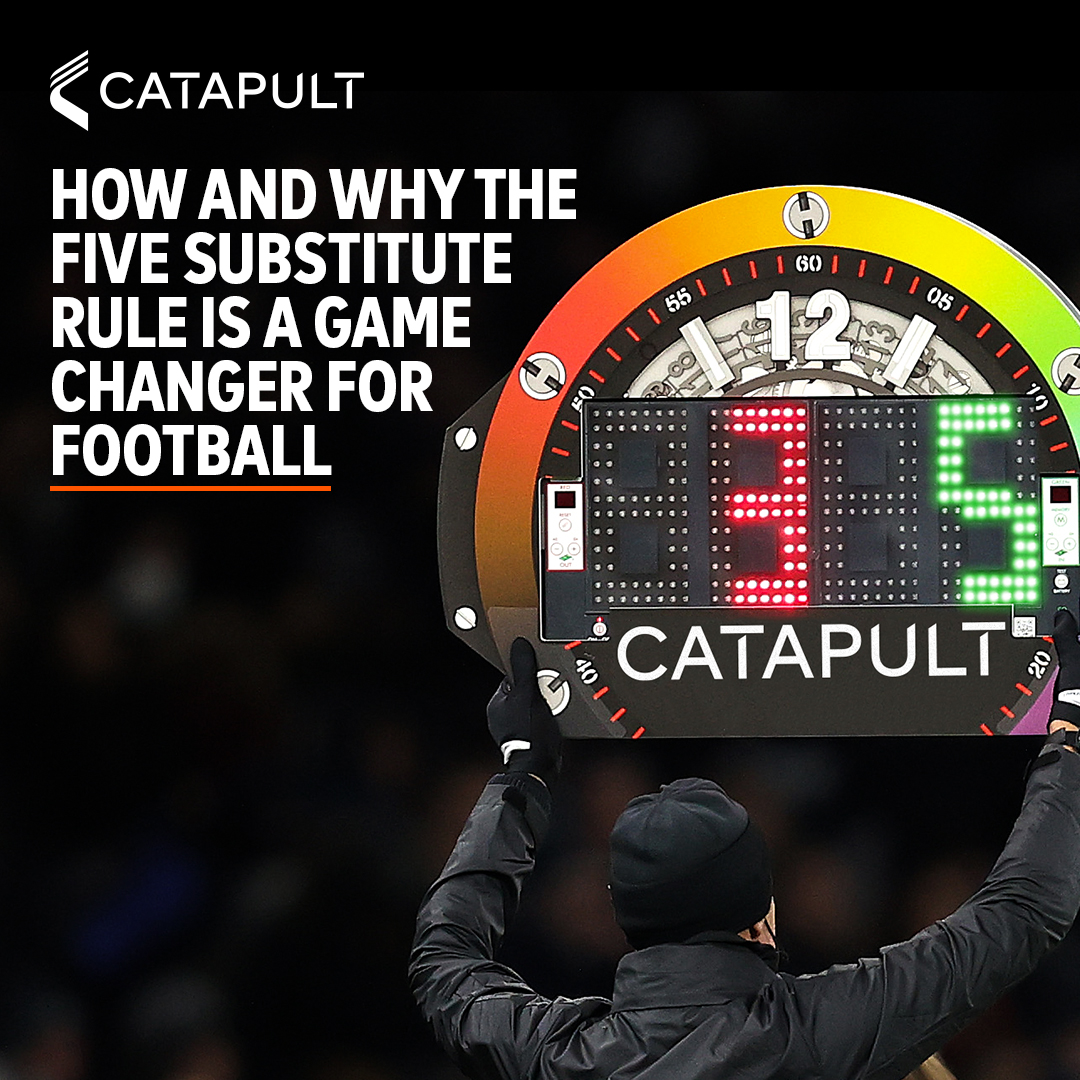
→ Download this report, by clicking here.
Report Contents
- Rule Change: From Three to Five
- Why did the substitute rule change?
- How the five-substitute rule change impacts fixture congestion
- The Cost of Injury
- Monitoring Fixture Congestion and Risk of Injury
- Adopting Athlete Monitoring
- Live Athlete Monitoring
- The Future of Sports Technology: Solving Challenges for Practitioners
- Case study: How Chelsea FC is reaping the rewards from adding context to performance data
- Catapult solutions for Pros
- Catapult solutions for you or your team
1.Rule Change: From Three to Five
For the 2022/2023 English Premier League (EPL) season, clubs have agreed to change the rules relating to the number of substitute teams can make in a match.
Each matchday, clubs will be permitted to use five substitutes, to be made on three occasions, with an additional opportunity at halftime.
As a result of this change, nine substitutes can also now be named on the matchday team sheet.
2. Why did the substitute rule change?
Chief Executive of the Players Football Association (PFA), Maheta Molango, told Sky Sports the five substitution rule goes some way to tackling issues surrounding player fatigue, health and wellness, and fixture congestion.
“When meeting our members, the most common issue they wanted to discuss was the impact of fixture congestion,” Molango said.
“It’s clear to me that the number of games being played is directly affecting players’ health and wellbeing.”
“The adoption of the five-substitute rule is a welcome step forward in what needs to be an ongoing effort to address issues with player fatigue, making sure they have the opportunity to perform at their best and to maintain the competitive edge that makes English football the best in the world.”
These comments came more than six months after the International Football Association Board (IFAB) — which supported the original introduction of the five-substitute rule at the height of the COVID-19 pandemic to tackle player recovery from the virus — advised that the five-substitute rule should be made permanent.
At the time, EPL clubs voted against the ruling being made permanent, primarily arguing that teams with stronger squads like Manchester City, Liverpool, and Chelsea would benefit greatly due to their squad depth compared to teams closer to the relegation zone.
But many opinions have since changed, with the EPL commenting recently, “the wellbeing of players and staff remains a priority.”
Clubs’ Perspective:
Club managers also had their say. At the time of the ruling changing to five substitutes, current Southampton Manager Ralph Hasenhuttl told The Athletic:
“There’s no surprise, we’ve spoken a lot of times about it. For us, I think [five substitutes] will be a game-changer, it’s very intense the way we play … It helps, definitely. There are some arguments from the small clubs (saying) not to do it because of the sporting difference we have with the biggest clubs, but I always see it as an advantage for us.”
West Ham Manager David Moyes added his voice:
“A year ago I said no chance. I’m now in the camp of wanting the opportunity to make five subs — and for no other reason than the welfare of players is important. I don’t want the game to be stopped all the time.
“If there are three opportunities (rather than five separate stoppages) then that works. I’m certainly more in favour of five subs than I was two years ago. I did change course on that. I’m not someone who uses loads of subs, but I just think it’s probably right now for the players that that opportunity is there.”
Players’ Perspective:
With the addition of the Winter 2022 FIFA World Cup, Belgium and Manchester City midfielder Kevin De Bruyne could play up to 78 matches during the 2022/23 season with only a three-week break across the year.
For context, 79 matches is almost as many matches as NBA players play during their regular season, so not that bad, right?
Wrong. NBA games last for a total of 48 minutes, and it is rare that players last on the court for more than 40 minutes. Compare this to the emphatic Premier League Player of the Season, De Bruyne, who regularly plays 90+ minutes each game.
Given this, players such as Gareth Bale, have recently called for football’s governing bodies, teams, and other stakeholders to change this potentially harmful schedule.
Bale told the Manchester Evening Standard:
“People’s bodies can’t deal with that kind of calendar year after year. Something has to change. People at the top of the game have to do something but, unfortunately, money comes into it. For player welfare, money needs to be overlooked and you need to look after the players because, without the players, there’s no product.”
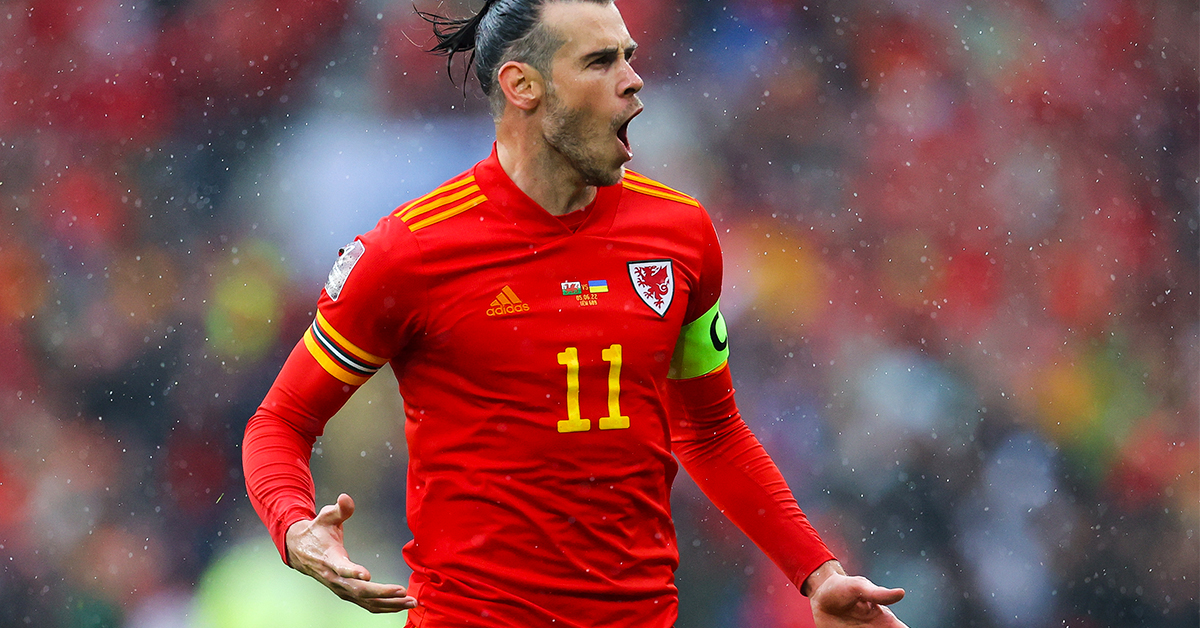
3. How the five-substitute rule change impacts fixture congestion
In every sport, and football is not alone, there are times that are more demanding than others in terms of the sheer volume of competitive fixtures. For football, the packed winter fixture spell and conflicts with other European and domestic trophies often create periods where teams are required to play two or even three games in a week.
These periods of intensive fixture congestion can make it very difficult for coaches and sports scientists to gain a balance between performance (training and match) and effective recovery. This challenge is exacerbated by the fact that all athletes respond and recover differently to imposed stresses.
Limited recovery time between matches impacts readiness for subsequent competition, and physical and technical performance.
The move to five-substitutes tackles this performance challenge by mitigating the demands on players, with fewer of the starting 11 having to make it to 90 minutes and extra time. This, coupled with an increased capacity to balance performance and recovery, as players are playing fewer minutes, allows for greater recovery time.
Sir Alex Ferguson, famously once said, back in 2013:
“Sports science is the biggest and most important change in my lifetime” and arguably this five-substitution ruling permits sports scientists more time to do the work that impacts their team’s performance.
Without the appropriate time, players are more susceptible to the risk of injury.
According to recent research conducted by injury data analyst Ben Dinnery, EPL players are four times more likely to sustain an in-game hamstring injury in December and January than at any other time of the season. Over the same period, it is suggested that 90% of teams will suffer an in-game injury on any given week, compared to an average of 15% at other times of the season.
4. The Cost of Injury
With this increased likelihood of injury, there are both financial and performance costs.
According to the BBC, the cost of injuries to English Premier League clubs rose from £176.6m to £217m (an increase of 21%) between the 2015/16 and 16/17 seasons. Insurance broker JLT Speciality calculated that the average cost of an injury in the EPL was £323,000 in player wages, a significant inefficiency in the application of clubs’ financial resources.
Further research in 2019 by the 21st Club (now more commonly known as the Twenty First Group) indicates professional players suffer 25-35 injuries per 1,000 hours of match exposure, giving the game an injury risk factor more than 1,000 times greater than other ‘high-risk’ industries.
As the physical demands and financial stakes continue to increase, those injuries can be difficult to mitigate and often come with a significant cost. According to our research, EPL clubs paid an estimated £166m to injured players in 2018/19, 14% of total fixed-wage expenditure across the division.
PART 1: FINANCIAL COST
EPL players suffered a total of 804 separate injuries during the 2018/19 season, resulting in 18,230 days spent on the sidelines. 21st Club’s research highlights the significant financial cost of those injuries to clubs over the course of the campaign.
- On average, players missed 8% of the league campaign (3.04 games) through injury.
- The average cost of an injury was £200k in fixed wages.
- The two Manchester clubs reportedly spent a combined £43.7m on injured players. Both clubs spent £6m more than Arsenal, the next biggest spender.
PART 2: PERFORMANCE COST
There are several elements to consider when assessing the impact of injuries on performance. By attempting to quantify factors such as the quality of sidelined players and the contribution those players would be expected to make, we can start to build a picture of the impact of injury on team performance over the campaign.
The graph below indicates the expected decline in points if each EPL team’s two best players were injured for half a season. Accordingly, Liverpool was most reliant on their highest quality players (Mohamed Salah and Sadio Mane). If both were to miss half the season, the club would expect to be 2.25 points worse off.
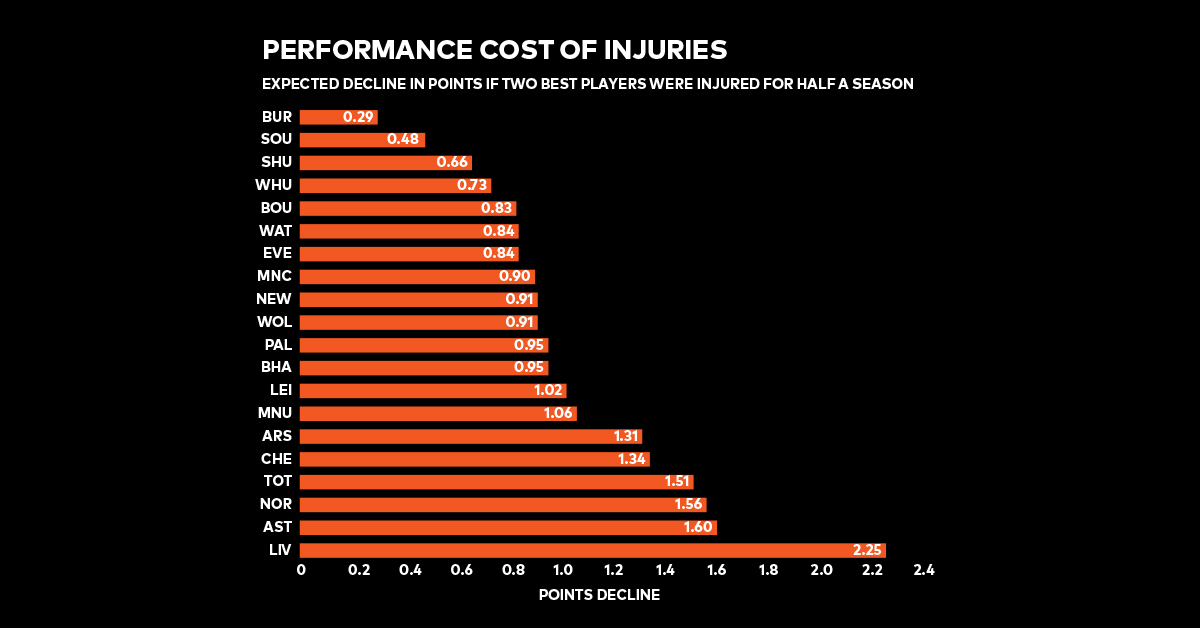
5. Monitoring Fixture Congestion and Risk of Injury
Limited recovery time between matches impacts readiness for subsequent competition, and potentially physical and technical performance.
Given that performance and associated injury risk can be negatively impacted by fatigue at the busiest times of the season, it is vital that clubs plan training appropriately to give athletes the best possible chance to recover from, and prepare for, each match. Helping in this process is athlete monitoring with technologies such as Catapult Vector.
At its most basic level, periodisation is the systematic planning of training with the goal of helping athletes to reach peak physical and psychological (fitness and freshness) conditions at a specified time (typically coinciding with competition). Divided into macrocycles (usually the annual/season plan), mesocycles (specific training blocks that may last for several weeks), and microcycles (shorter cycles typically lasting for a week), periodised training plans are an excellent way of systematically balancing training improvements with adequate recovery.
There is evidence to support the use of periodisation strategies in sports with long competition periods, like football and rugby. A study conducted by Javier Mallo in 2012 found that block periodisation where each macrocycle is divided into three distinct mesocycles enabled football players to maintain and in some cases improve their levels of physical performance during a sustained 30-week competition period.
Of course, given that every athlete, team and sport has unique physiological demands, implementing a periodised training plan is not without challenges, particularly during times of significant fixture congestion. For example, the need to maintain different neuromuscular and metabolic training goals as well as catering to technical and tactical practice means strategies need to be tailored to suit the requirements of individual athletes and sports.
According to Rhea et al, continued reliance on a single periodisation method may lead to attenuated training responses. This can make it more difficult for teams to ensure that they are optimising the performance of their athletes, while also leaving them at potentially greater risk of injury. This complexity has led many teams to use different periodisation strategies at different times of the season.
For example, a mesocycle planned during pre-season is likely to be far more intensive than one implemented during the busiest times of the season. As aims and contexts change, so should the way coaches and sports scientists manage the workload of their athletes. By doing this, teams are able to increase variation in training and continually encourage positive adaptations while catering to changing demands as a campaign progresses.
There is no one-size-fits-all training plan to cope with periods of fixture congestion. However, given the link that has been established between appropriate load management and injury risk reduction, it is crucial that clubs use athlete monitoring technologies that provide indications of the global demands of training and matches and accommodate the specific needs of their players.
6. Adopting Athlete Monitoring
In addition to using athlete monitoring to mitigate the risks of injury, there are other associated benefits:
Talent Identification
“Less than 1% of players who enter an academy at nine years old make it as a professional footballer.” No Hunger In Paradise: The Players. The Journey. The Dream. (Michael Calvin, 2017).
With less than 1% of players who enter an academy at nine years old making it as a professional footballer, it is evident that finding and nurturing sporting talent can be a complicated and difficult process.
By investing in athlete monitoring technology, teams give themselves access to a wealth of objective performance data that can inform important recruitment, selection and succession planning decisions.
Once a team has established performance benchmarks among its squads, it becomes possible to quantify the physical demands of the sport at different levels and for different positions.
This type of work enables organisations to map their academy prospects against senior players and ensure their loading is appropriate at a vital time in their development.
“When our players see their data and compare it to a Championship player or maybe a League Two player, then they can see what they really have to achieve,” says Curtis Fleming, a former V9 Academy coach, now with Bristol City. “The data gives them a foundation to know a lot more about themselves.”
As clubs look to improve the efficiency of their talent pathways while preparing young athletes for the demands of the professional game, athlete monitoring technologies are now well established as a key component of successful talent development infrastructures.
Improved Communication & Data Management
Clear and efficient communication is central to the success of any sporting organisation. In what is a fast-paced and competitive environment, it is vital to establish strong lines of communication across departments and between the coaching staff and players.
When it comes to coach-athlete communication, brevity and clarity are paramount; coaches constantly need to be able to distil information into messages that are easy for athletes to digest and quickly apply to their performance on the field. Similarly, sports scientists are required to synthesise huge amounts of data into actionable insights that coaches can build into training schedules and tactical planning.
Athlete monitoring can have a significant impact on team communication.
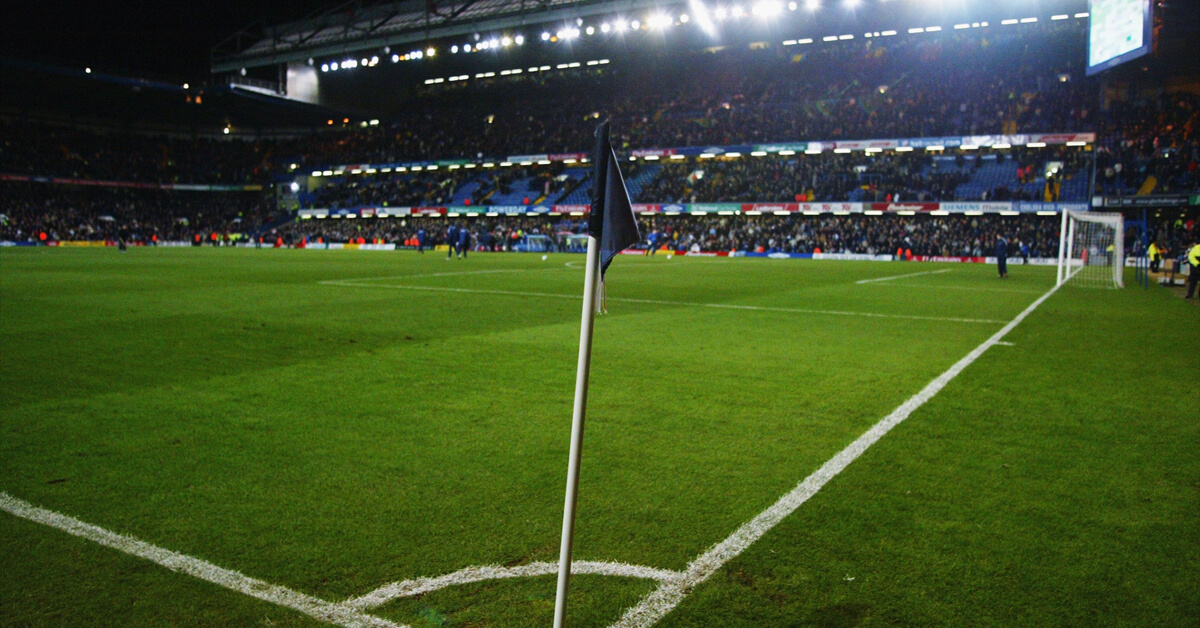
From the presentation of performance insights to justifying training plans and selection decisions, the ability to source actionable insights and support judgments with objective data is imperative and delivers value that goes far beyond on-field performance.
The sports science department at Atlético Paranaense, one of the biggest teams in Brazil, appreciates the importance of communication in educating others about the application of athlete monitoring. Formally managed by Lead Physiologist André Fornaziero, the club’s sports scientists work closely with coaches to help them better understand the relevance of key metrics and insights.
“We show the coaches some rankings of the training drills that produce the most Inertial Movement Analysis (IMA), top speed distance, or total distance covered,” says Fornaziero. “These classifications help them to better understand how to use the GPS, analyse the loads involved with their training plans, and plan for the next session.”
7. Live Athlete Monitoring
New Live Features Unlock Real-Time Insights for Faster Decision-Making
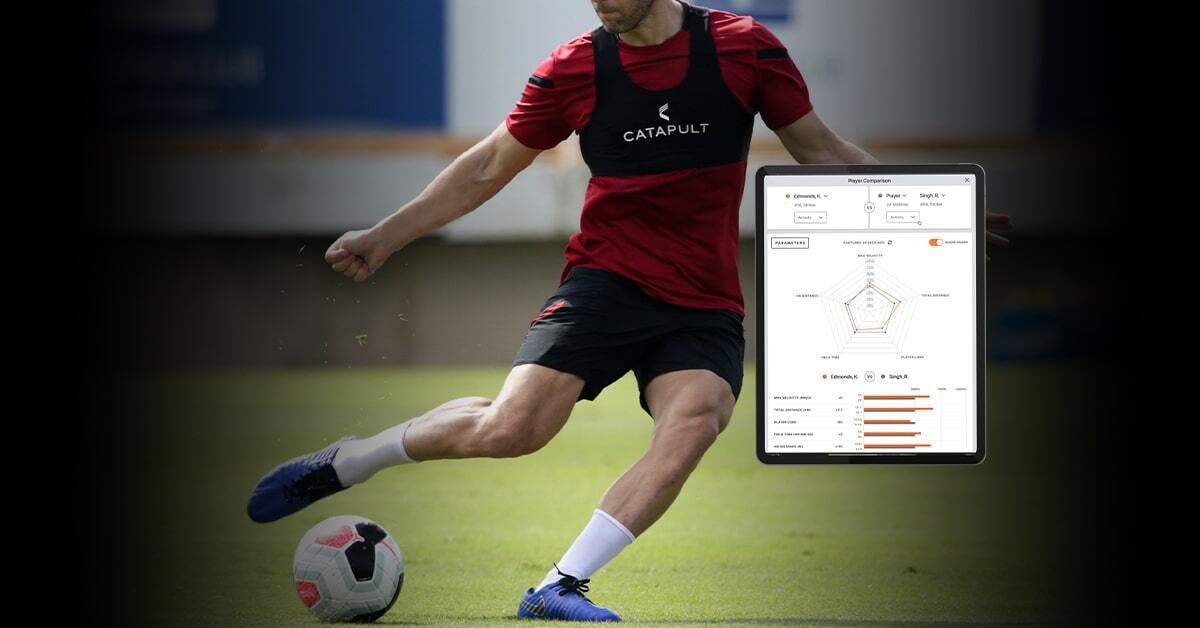
Within the Vector Live App, teams and coaches can now capture more athlete data directly from the sidelines, keep coaches informed instantly, and impact the game and training strategies in real-time:
- Objective Adjustments from the Sidelines: Coaches can manage athlete workloads live, ensuring they maximize every second of player performance. With individual targets for each athlete, they can see when athletes are under- or over-performing their thresholds and make in-game adjustments rather than waiting for post-game analysis and risking costly injuries.
- Live Player Comparisons: Real-time player comparisons can inform game strategies without having to wait for lengthy post-game analysis. Whether in training or in games, coaches can compare athlete-to-athlete performance or compare individual athletes to both pre-set targets and historical data to see which players are performing at their best.
- Instant Benching Capabilities: Data analysis can now move as quickly as the game. Coaches are able to instantly swap players in real-time and maintain intensity data, including speed, acceleration, and heart rate, during player changes, never losing a minute to manual tasks and analysis.
–> To learn more about these features, click here.
A Premier League club coach, said:
“With the new updates to the Vector Live App, we have been able to input historical data for every individual, so we can understand how much they have completed compared to their own individual norms and decide if they are doing too much or too little. This allows us to make accurate real-time decisions on athlete loading and save time in post-session editing.”
8. The Future of Sports Technology: Solving Challenges for Practitioners
From the Sidelines to the Pit Wall
Other sports can often be sources of inspiration for teams. Observing the ways other teams collect, analyse, and report data is often a way many practitioners discover new methods to improve their own manual tasks. Increasingly teams are looking to F1, the most technologically advanced sport in the world, for inspiration.
At the 2022 Sports Innovation Conference in Dusseldorf, Germany, which coincided with Catapult client Toyota Gazoo Racing winning Le Mans 2022, clubs were interested in learning how motorsport, particularly Formula 1 teams, use real-time data to achieve the marginal gains that, when compounded, lead to competitive advantages on the track.
See how the eight-time world champions use real-time data:
A staff member from a current EPL team told Catapult: “One day, analysts might be sat on the sidelines, a bit like you see the engineers on an F1 pit wall.
“With the football analysis process shifting to the point where their involvement will be seen more predominantly in-game, enabling analysis to inform coaches and data-based decision-making to be done live.”
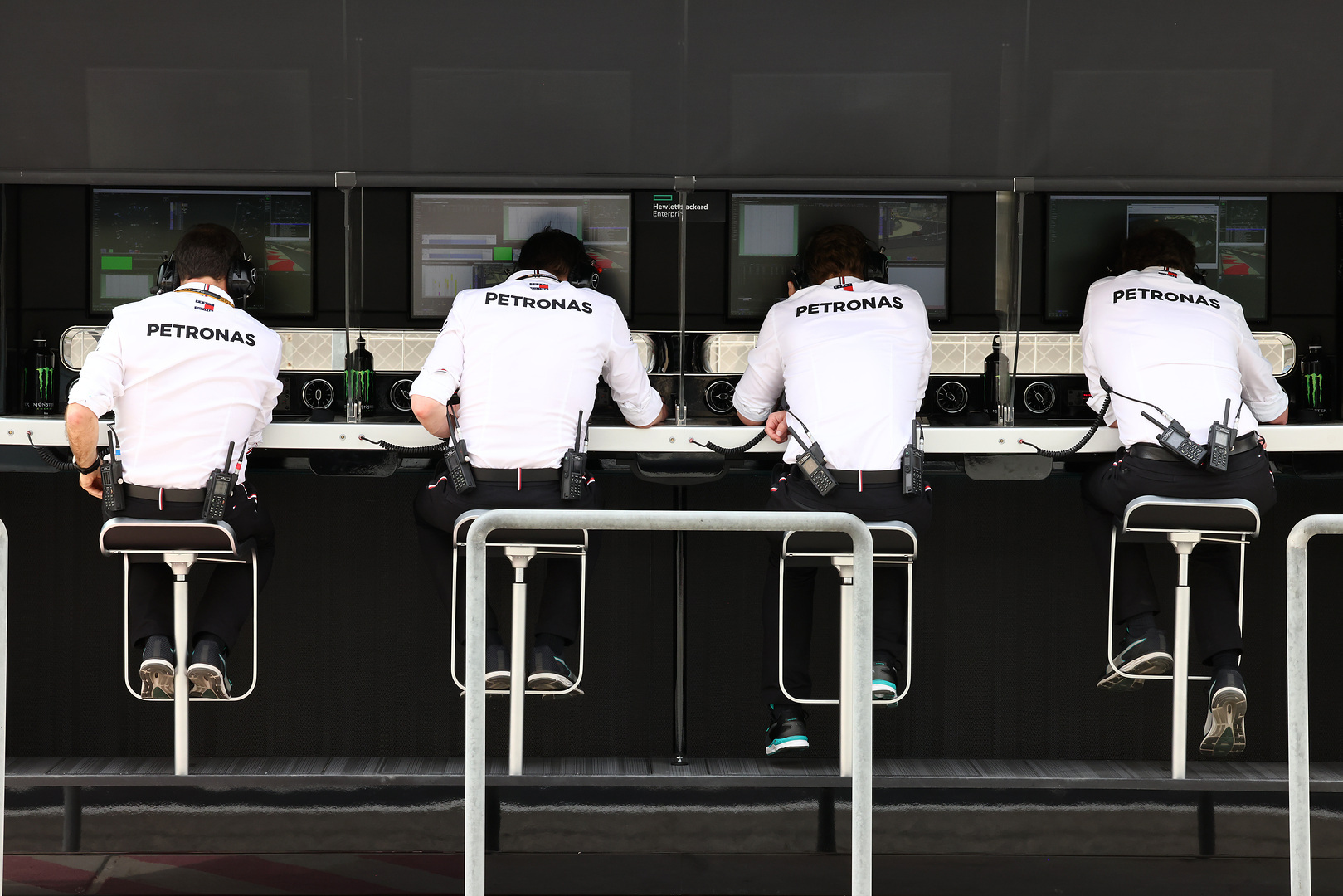
*For more information on what goes on at Mercedes AMG Petronas F1 Team’s pit wall, click here to read the blog ‘Mercedes F1 Pit Wall Explained’.
Suggestions that football will soon be more like Formula 1 was also mentioned in Christoph Biermann’s book, Football Hackers – The Sciences and Art of a Data Revolution. Citing the book directly:
“Every event on the pitch, every move and every run has been measured and counted. Video and data were joined up more seamlessly than I had ever seen before in football …
“Formula 1 is the most technologically advanced sport on the planet. There are dozens of sensors built into a car, every race produces 10 terabytes of data. On race days, 200 specialists interpret the flow of information … When they said they wanted a similar program for football as well, they set about working on the software I was now looking at in transfixed amazement.
“But that day in London I realised that the revolution was now truly happening … if you ignore it, you’ve only got yourself to blame.”
What it Means for the Future of Football
As the world leader in athlete monitoring, Catapult is uniquely positioned to revolutionise performance analysis and has recently released the integration of performance data and video analysis. Honed from the pit walls of F1, this technology allows teams to sync athlete performance data from Catapult’s Vector wearable devices with MatchTracker, the most powerful video analysis solution for football, for the first time.
Catapult Chief Technology Officer, Gareth Griffith, said: “The integration of physical data and video gives teams a huge boost in performance analysis capabilities. Previously, video and performance data analysis were very separate processes but now we’re working with teams to achieve the deepest insights with combined data across the whole organisation.
“Having worked with Formula 1 teams for many years, we understand how to maximise competitive edge through in-depth data and video analysis. It is very exciting to be a driving force in the adoption of similar philosophies in other elite-level sports.”
→ Try Performance Data + Video for free, click here to request a demo.
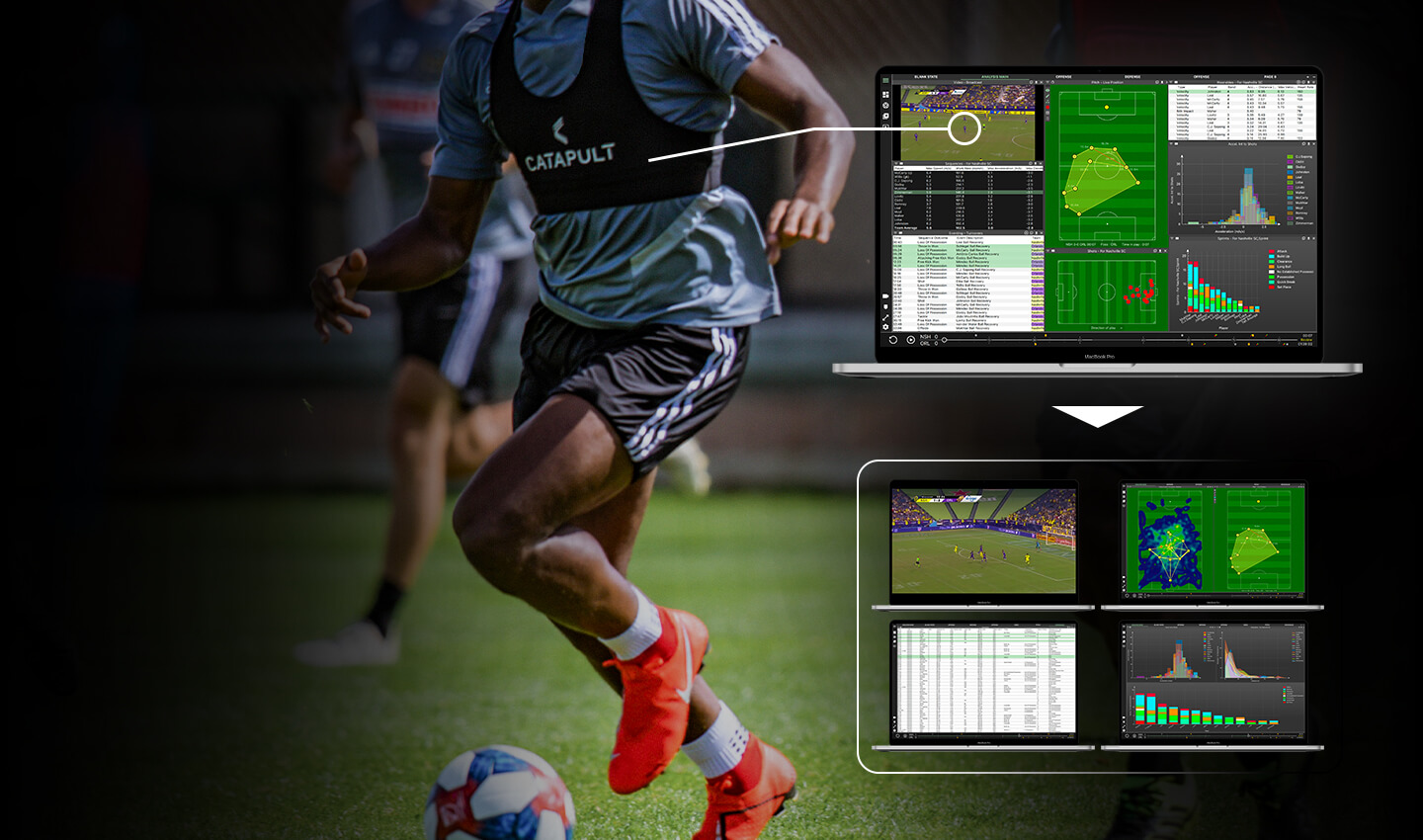
Chelsea FC’s Head of Academy Sports Science and Physical Fitness, Jack Christopher, said:
“Athletes today are more receptive to video, and we can now show the players the movements they should be doing and what their intensity should be.
“Additionally, we can show examples of others doing it, allowing us to get the message across much easier and bridge the gaps between opinion and insight.”
By connecting performance insights and video, teams can now:
- Understand performance outcomes in key game moments: Whether it’s a high press, quick break, or scoring opportunity, teams can understand the context of each outcome based on involved players’ physical outputs.
- Measure player performance to improve training programs: Teams can now understand the physical outputs required to execute game strategy during training. This is done by benchmarking in-game physical data to training programs.
- Unlock positional data: Teams can now access positional data without optical cameras using our built-in wearable GPS. This provides a new view into key insights across every player’s action and game moment.
- Connected analysis across your entire team: With every dataset connected to one platform, analysts and sports scientists can collaborate on team and player-specific performance insights. Coaches can now understand a new level of connected insights to inform game strategy and training improvements.
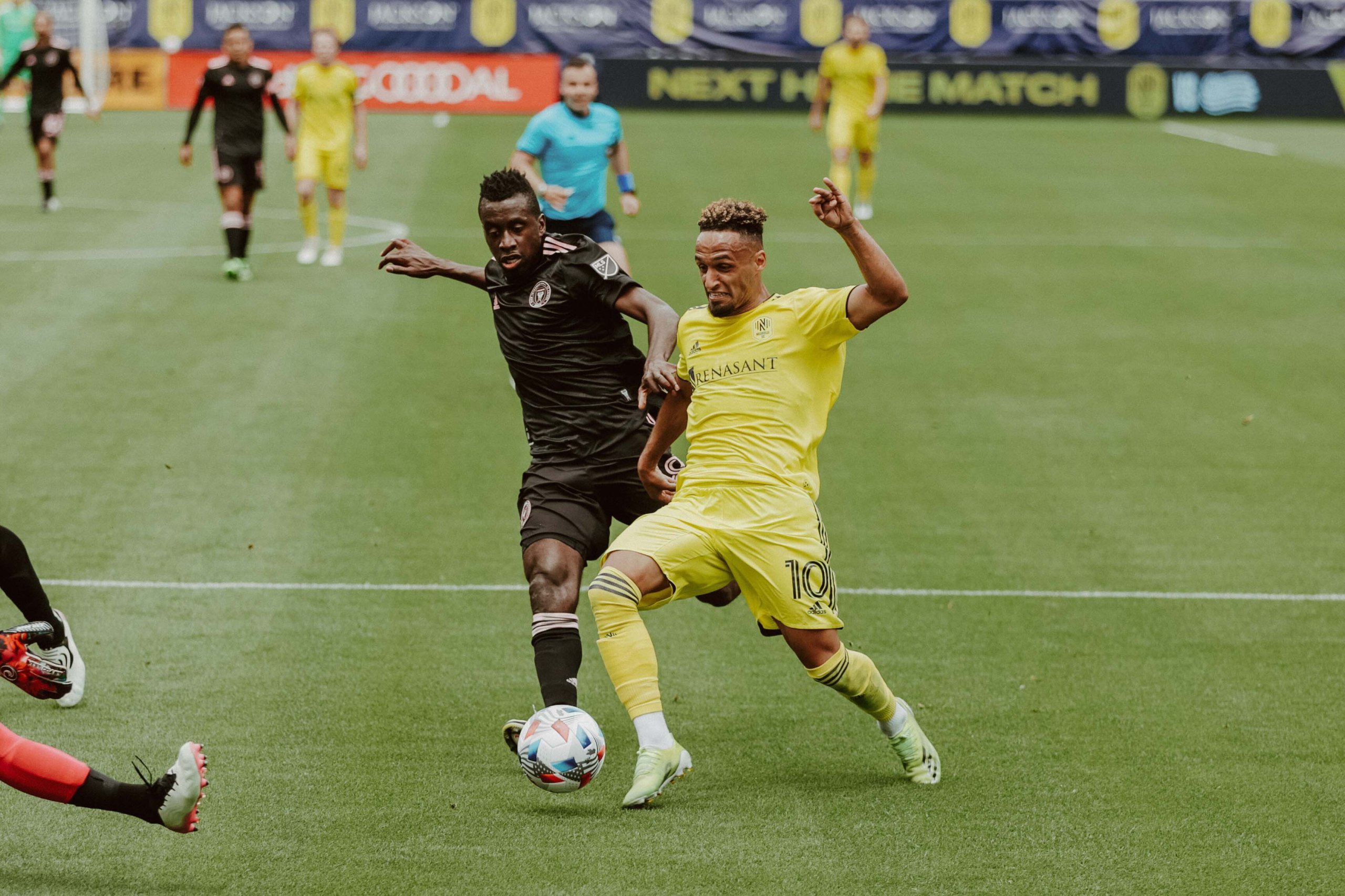
In addition, Nashville SC Senior Director of Strategy and Analytics, Oliver Miller-Farrell:
“The integration of a performance dataset within our video software will give us a new lens of analysis for both games and training sessions, as well as offer us ways to improve the efficiency of our existing workflows across both performance and video departments. It’s an exciting combination of two important information sources that mutually provide context to one another.”
9. Case study: How Chelsea FC is reaping the rewards from adding context to performance data
- Collecting data is only part of the analysis process for elite teams, and the athlete-specific metrics that are collected should be evaluated and communicated using game- or training-based context.
- Context is key throughout the analysis process and Catapult’s integrated performance data and video solution is the next step in elite football analytics.
- The analysis process will continue to evolve as technology improves. With the integration of performance data and video, coaches can more easily understand the insights shared by analysts.
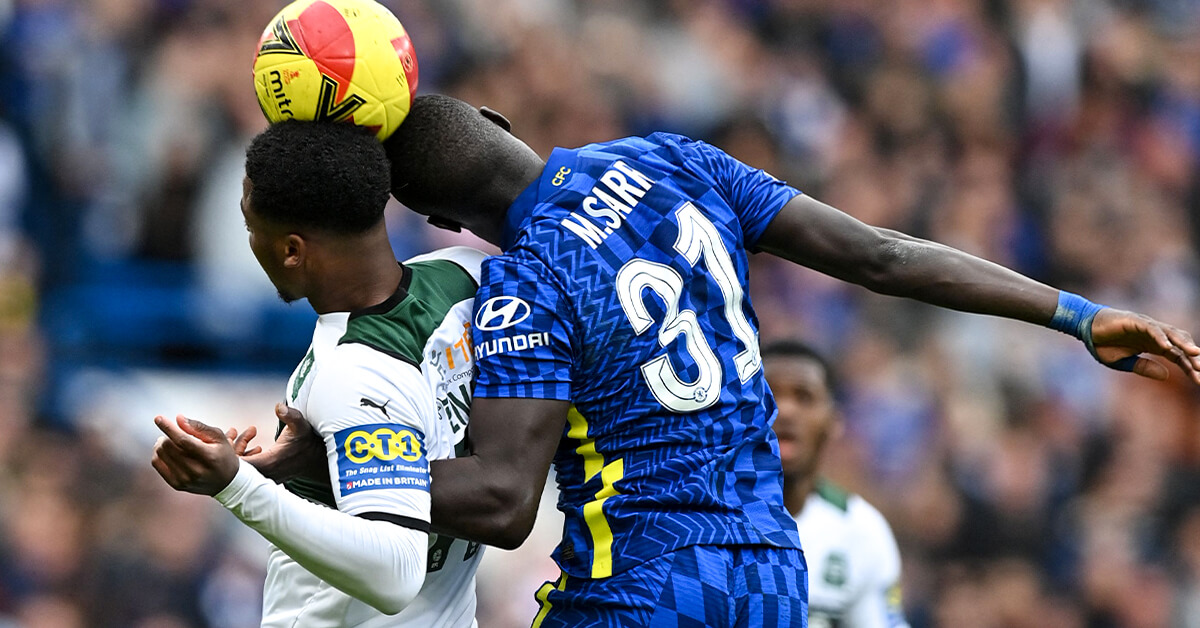
This integrated development makes it easier for coaches to understand the insights shared by analysts, said Jack Christopher, Chelsea FC’s Head of Academy Sports Science.
“Adding context is so important and just having totals isn’t enough anymore,” he said. “You need to be able to visualise and understand the differences in load leading up to injuries, for example, and when it comes to sharing your insights with coaches, you should always be looking to add game- or training-based context. Doing so makes it much easier for coaches to understand your reported insights.”
U23 Lead Athletic Development Coach Elliott Axtell continued: “Telling a story is really what you’re doing with your reporting. Adding context to your insights — say, detailing how much weekly workload a player has had — is key to determining performance come matchday.”
Innovations like integrated performance data and video help to elevate the work of an analyst, especially when working with the next generation of talent, said Christopher.
“Younger generations are more receptive to video, and we can now show the players the movements they should be doing and what their intensity should be,” he said. “Additionally, we can show examples of others doing it, allowing us to get the message across much easier and bridge the gaps between opinion and insight.”
→ Click here to request a free demo of Performance Data + Video.
10. Catapult solutions for Pros:
Performance wearables
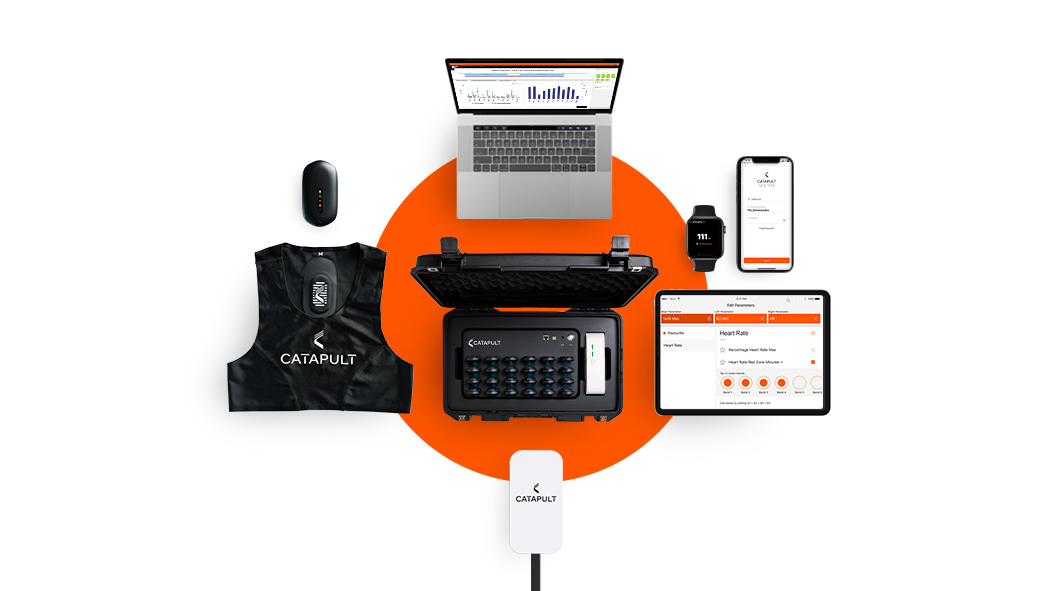
Catapult Vector – Elite wearable solutions that track athlete performance, manage injury risk, expedite return-to-play, and more.
–> Click here to learn more.
Video analysis platform
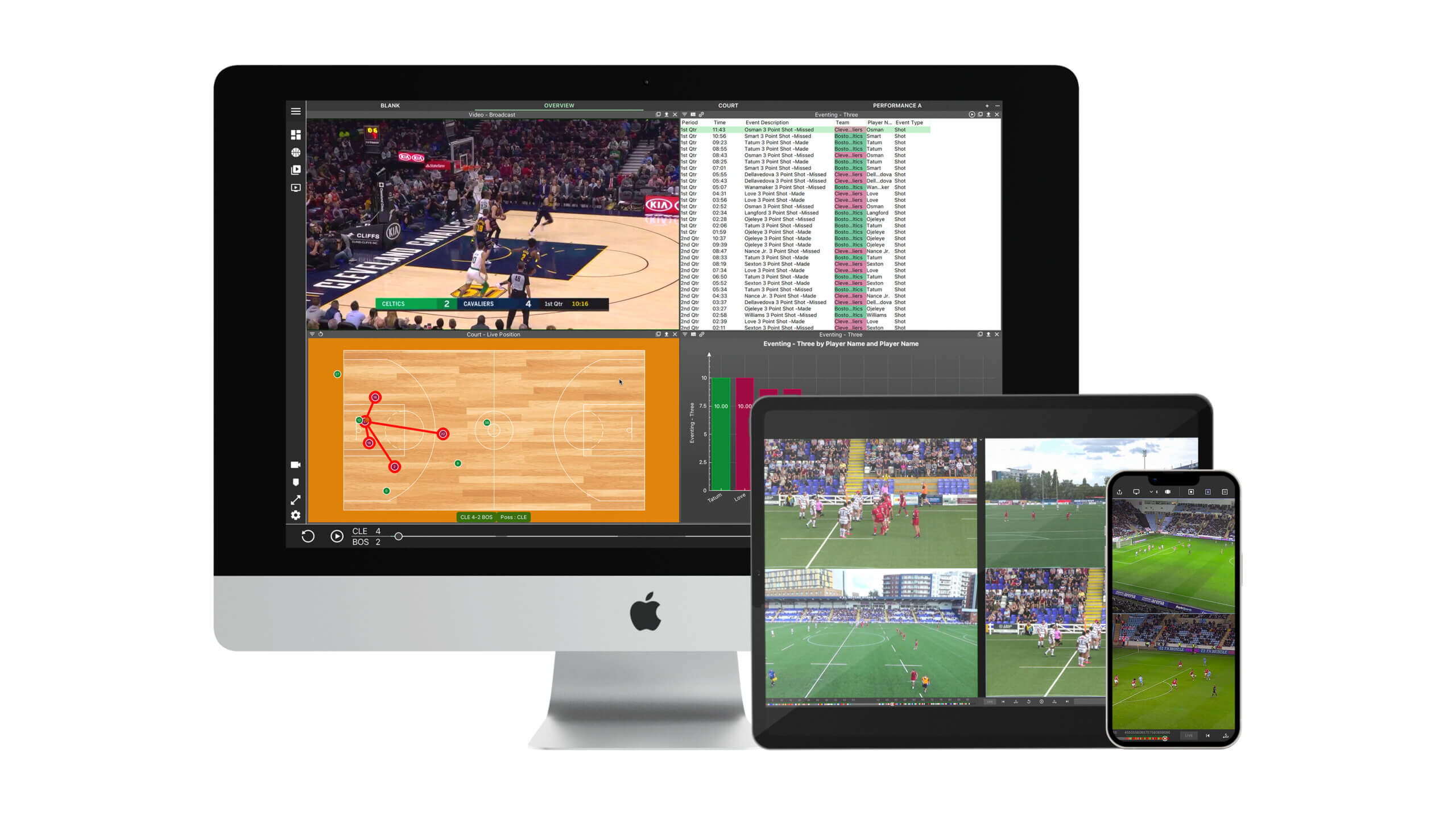
MatchTracker – A comprehensive analysis tool for in-depth insights during and post-game.
Focus – Capture, collect, and present game content & insights.
Hub – Share video, playlists and insights from the cloud to anyone on any device.
–> View Catapult’s Pro Video suite here.